
This post is all about how to take care of your stand up paddleboard (or SUP). I know this article won’t be of interest to all of The Trip community. But the way I create content for this website is such – when I look for articles on the Internet I need for my life and don’t find them, I create them! So voila. An article on repairing and caring for a paddleboard. The next post will be back to regularly scheduled programming.
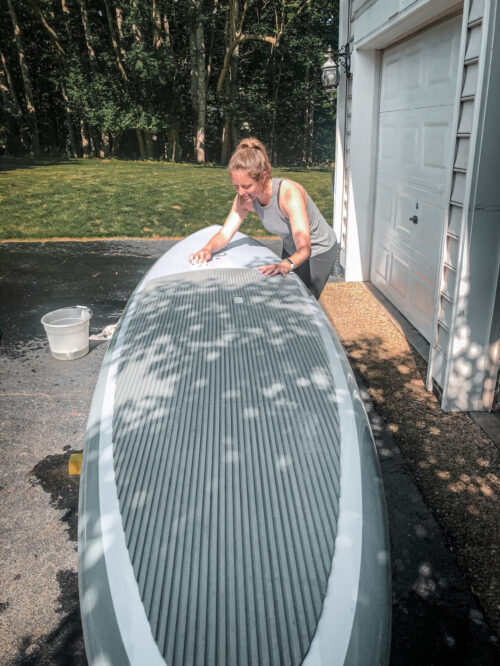
I love my paddleboard, who is named “Lilac Attack.” I’ve had her for about four years and paddled her many miles on lakes, reservoirs and saltwater channels.
My board is NOT an inflatable. (If you are looking specifically for inflatable paddleboard repair, I recommend this link.) She has held up great and I truly have no complaints. She was an investment and a gift and has given me so much peace and beauty. I love having my board.
However, after some years and some miles, there was some wear and tear starting to show. While I have a wetsuit and am not scared to paddle year-round, when the hot weather began to hit our area of Virginia, I knew I’d be taking Lilac Attack out more and wanted to make sure she received some TLC beforehand
After a lot of research, scrubbing, cutting tape, and hours in the sun, here’s what I’ve learned.
Note: There are some affiliate links below. This means that if you click, a small amount is given to support TFT. You can read our disclaimer here.
How to Take Care of Your Stand Up Paddleboard:
- Store your stand up paddleboard well. If at all possible, avoid storing it outside. Due to circumstances, Lilac Attack was outside for almost two years. She was under a roof, but she still got BEAT UP. Wind, a light breeze, and sun damage can all do a surprising number on a board’s overall longevity.
- Consider a SUP bag. This is especially true if you need to store your SUP outside or otherwise move it around a lot.
- Use good storage hooks. I can’t find the exact ones I have used on our garage walls, but this is similar. They have been great. They attach easily in anchors in the garage wall and the rubber keeps the board safe while in storage.
- Don’t run into things if you can avoid it! The worst are oyster beds. Obviously, this is a paddleboard and an imprecise sport. So don’t stress about this. But also do be conscious of coming in too hard to a dock or a beach.
- Take care of dents and dings promptly (more on this below). Dings that go through the fiberglass and expose the foam core are especially bad for the board.
- Always rinse your stand up paddleboard after paddling. This is especially true if you are paddling in salt or brackish water. Saltwater will eat away at the pads.
- Mind the fin! The fin is so important to board performance. Be sure when storing and transporting your board to have it fin up.
- Travel properly. There are many ways to transport your paddleboard with your vehicle. Of course, a roof rack system is going to be the best for the board, but also the most expensive. I personally find the full SupDawg system to be kinder to the board than the foam pads. Just be sure to, again, mind the fin and, when securing the board, use towels or the SUP bag to make sure cords and ropes don’t cut into or scratch your board.
That may seem like a lot to manage. But as someone who neglected a few of these things, I will remind you from firsthand experience that an ounce of prevention now can save a ton of time and hassle later!
But, if you do happen to get marks and nicks on your board, here’s what to do.
How to Restore and Repair Your Stand Up Paddleboard:
After a lot of research and careful consideration, I ordered a few products off of Amazon (after trying to source them at local stores without luck). They include a high-performance gear cleaner (I was primarily worried about the pad meeting a harsh detergent), Tenacious Tape specifically for outdoor gear, and Magic Erasers (actually, we always have those on hand because they can do just about anything – what kind of black magic are these things?!).

1. Do a careful and thoughtful cleaning of your board.
2. Towel it off and assess top and bottom of the board for any damage.
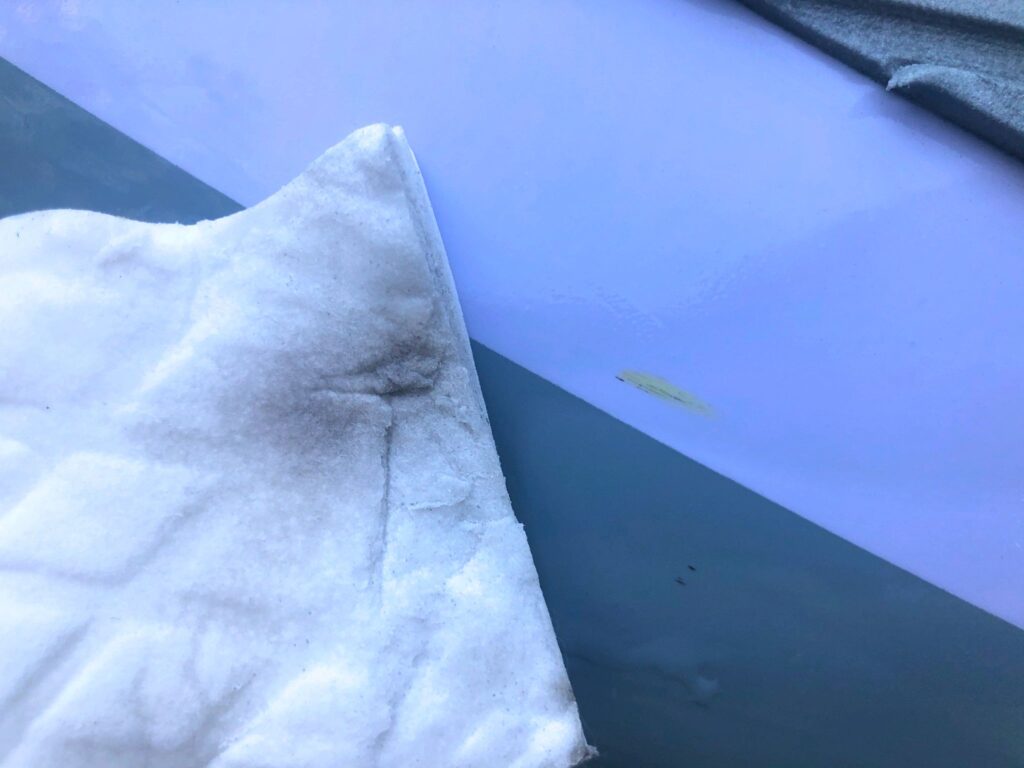
3. Get out the Magic Erasers! Gently scrub away what you can. Remember not to push so hard that you scratch or dent the board, but don’t be afraid to put a little elbow grease into things either.
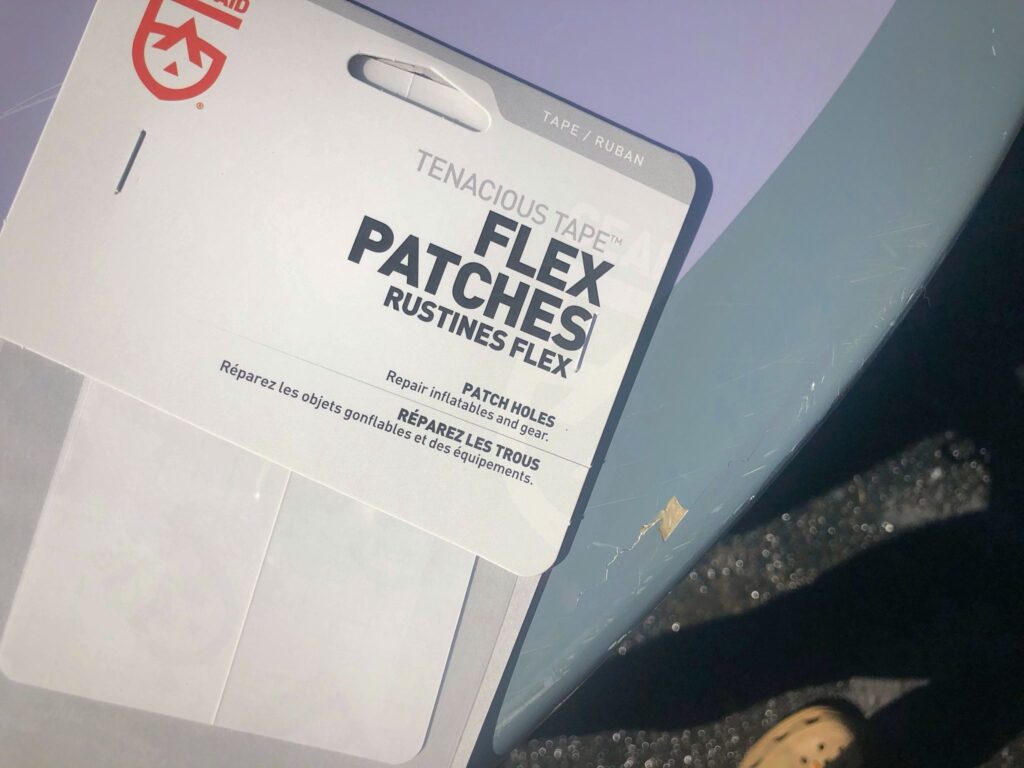
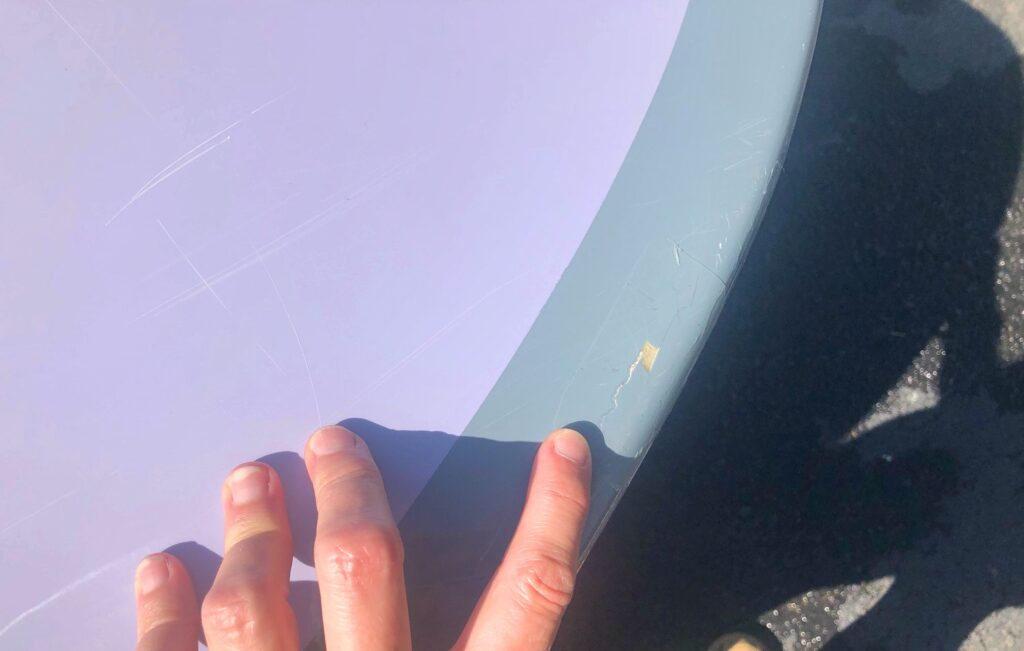
4. Use special tape to cover any dents that look dangerous to the stand up paddleboard. This tape was made specifically for inflatables, but I couldn’t seem to find anything that was recommended for my board, so picked this up. I followed the instructions on the back of the Tenacious Tape and it was so easy! Thus far, it has held up perfectly for a couple of paddles and, more importantly, it’s keeping water from penetrating to the core of the board.

I could write essays on why I love paddleboarding so much – but I will spare you. Suffice it to say, it invigorates me while also allowing me to be in nature. It connects me while allowing me a sort of moving meditation.
Taking care of my board ensures that my future paddle life can continue.
If you have any questions, drop them below or shoot me an email. Happy to help and meet fellow SUPers.
pin it for later:
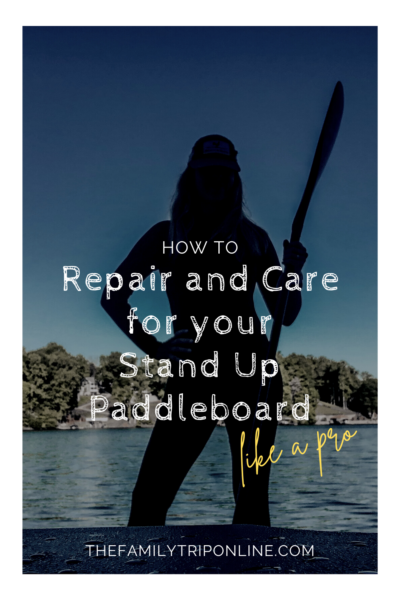

Thanks for this post! I stored my board outdoors for a couple minutes as well, and I am now seeing the impact of wear and tear on the pads especially. I really appreciate the detail and product recommendations. Glad to see people are still blogging, too! This post a pleasant surprise. Happy paddling!
Thanks so much for the loving vibes and for leaving a comment! (It’s nice to know people still read blogs, too. 🙂 )